
I consider Tagliatelle with Bolognese ragù one of the symbols of Italian cuisine. Handmade fresh pasta and a slowly simmered sauce with few quality ingredients to get the best flavor. This is the traditional Bolognese recipe for the classic beef ragù, or Bolognese sauce, the way it's been done in many Italian households for generations.
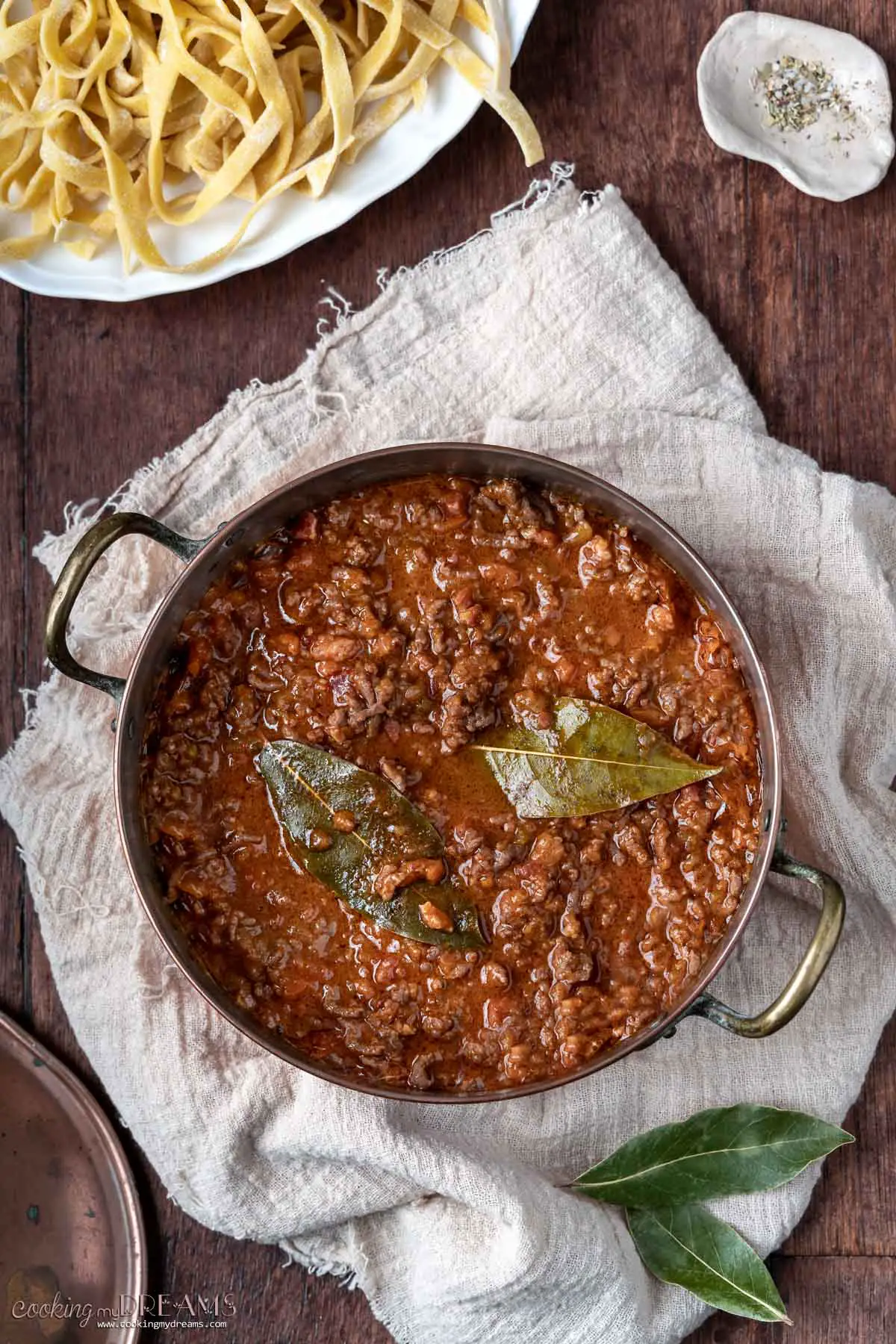
Ragù plays a major part in Italian cuisine. It's usually the main protagonist of Sunday lunch, either with Tagliatelle, Tortelli, or inside a Lasagna. Nonnas and Mammas wake up early on Sunday morning to carefully and slowly prepare the sauce as an ancient ritual. I'll always remember the smell when I woke up. Ragù is family.
Jump to:
Where is Bolognese Sauce from
Bolognese comes from the city of Bologna, Italy. Hence the name. Yes, Bologna is also the city of the famous cold meat, and also where Tortellini, Parmigiano, Prosciutto, and many more amazingly delicious ingredients and dishes were born.
From ancient Italian cookbooks, especially ones from the 18th century, it appears that the Neapolitan Ragù was the first famous meat-based sauce served with pasta.
While Bolognese sauce started appearing in cookbooks only in the 19th century. The first-ever "Maccheroni alla Bolognese" recipe was from Pellegrino Artusi in his famous cookbook mostly focused on northern Italy's traditional recipes.
Artusi's recipe is very very similar to the one I wrote in this post, which I took from a famous Italian chef Bruno Barbieri who has several Michelin star restaurants and was born and raised in Bologna.
What is the difference between Neapolitan, Tuscan, and Bolognese Ragù?
The word "Ragù" comes from the French "Ragout" and was initially used in Italy to call certain types of stews. During the centuries, stews started having tomato sauce in them and the sauce was then served with Pasta and the meat served separately as a second course. Then over the years, some started mincing the meat and serving it all together with pasta in the main course, and that's when Ragù's tradition started.
Each region has always had its own traditional recipes, some similar to each other, some similar to the confining Countries. So each region, each family, has its own traditional sauce. Here's below the main difference between the 3 most famous Italian Sauces:
- Neapolitan Ragù is usually made with many different cuts and types of meat, usually left in large chunks. It usually has both beef and pork with different types of meat like ribs, sausages, belly, shoulder, and so on.
- Bolognese Ragù, instead, is made with minced meat and it has only pork belly (pancetta) and minced beef.
- Tuscan Ragù is very similar to the Bolognese, but it doesn't use pancetta. It has minced meat of both pork and belly and additionally has Juniper berries.
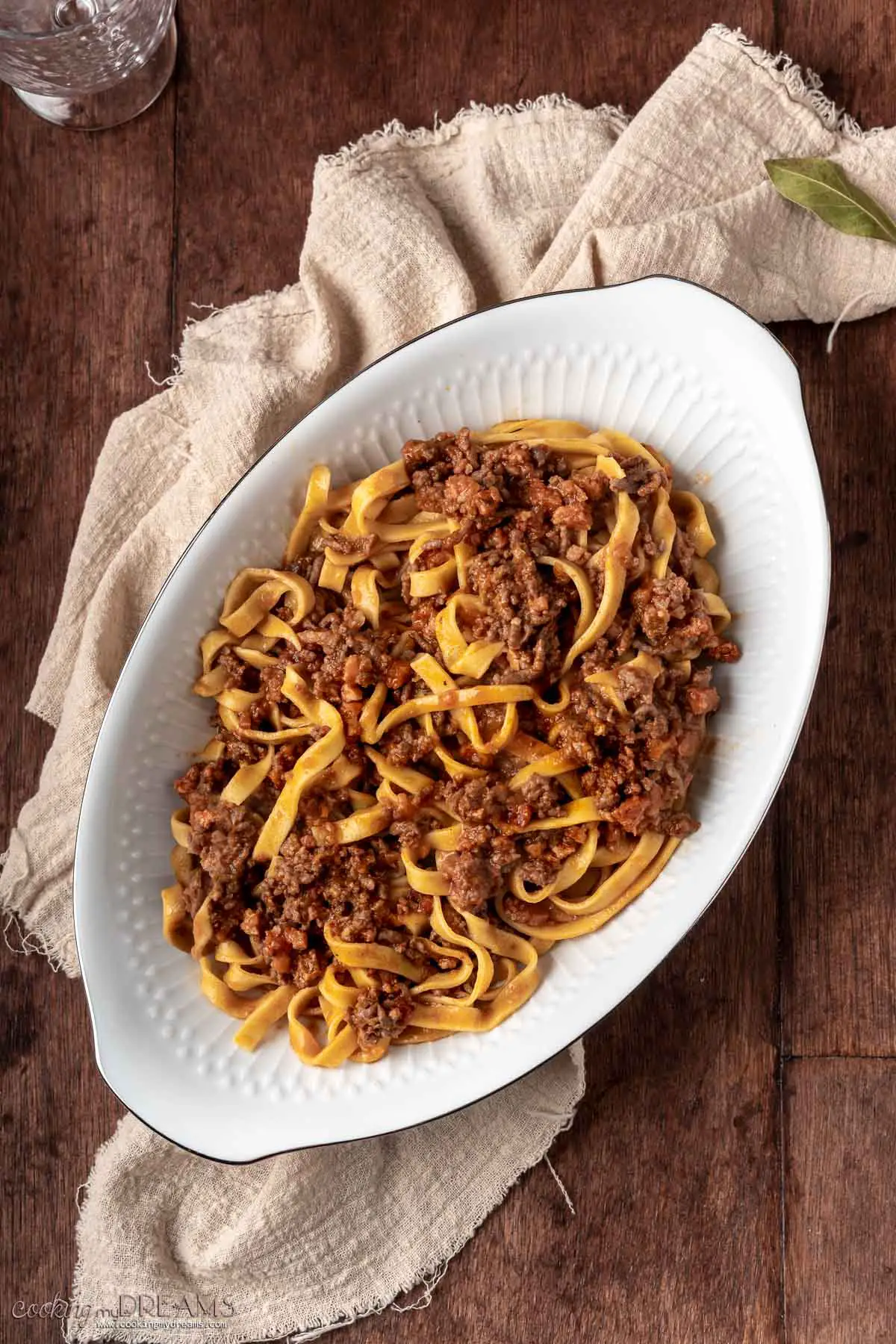
Ingredients
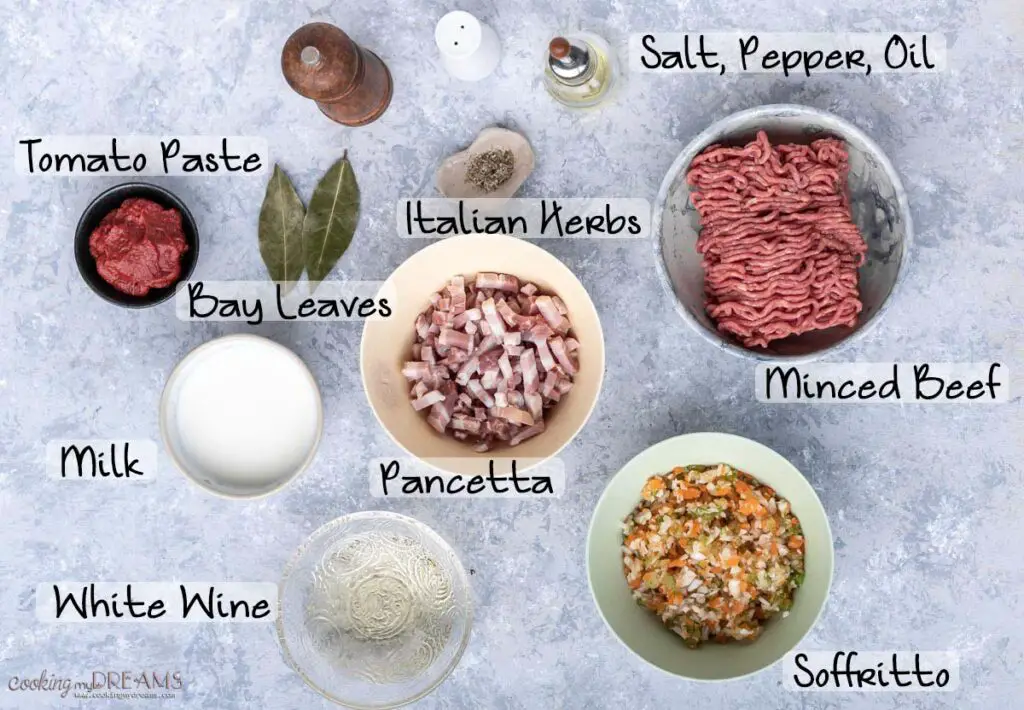
- Minced Beef. Pre-packaged minced beef from the supermarket will work fine, but if you want superior quality, ask your local butcher to prepare it.
- Pancetta. It's a rather important ingredient because it will add sweetness, flavor, and fattiness to the meat. If you can't find Pancetta and don't mind a smoky flavor, you can substitute it with bacon lardons.
- Soffritto. Soffritto is essentially a mix of finely minced onions, carrots, and celery. Some supermarkets sell it already made in the freezers, but you can easily make a big batch at home and then freeze it in portions for later use.
- Tomato Paste. One of the differences between Tuscan and Bolognese Ragù is that this is more dense and less saucy because it uses tomato paste instead of tomato sauce. You can of course substitute it but the paste will give it an amazing flavor and texture.
- White Wine. Use any dry white wine you have available. You can also skip the wine of course, although the end result may differ slightly.
- Whole Milk. Milk will cut the acidity from the tomato and will make the sauce nice and creamy. You can skip it or substitute it with regular milk.
- Italian Herbs. Sage, Rosemary, Thyme, and Bay Leaves are added to give more depth of flavor to the sauce. Ideally, you want them fresh and nicely tied with kitchen twine so you can easily remove it after the sauce is ready. Otherwise, substitute it with one teaspoon of mixed Italian herbs.
How to make the traditional Bolognese Beef Ragù
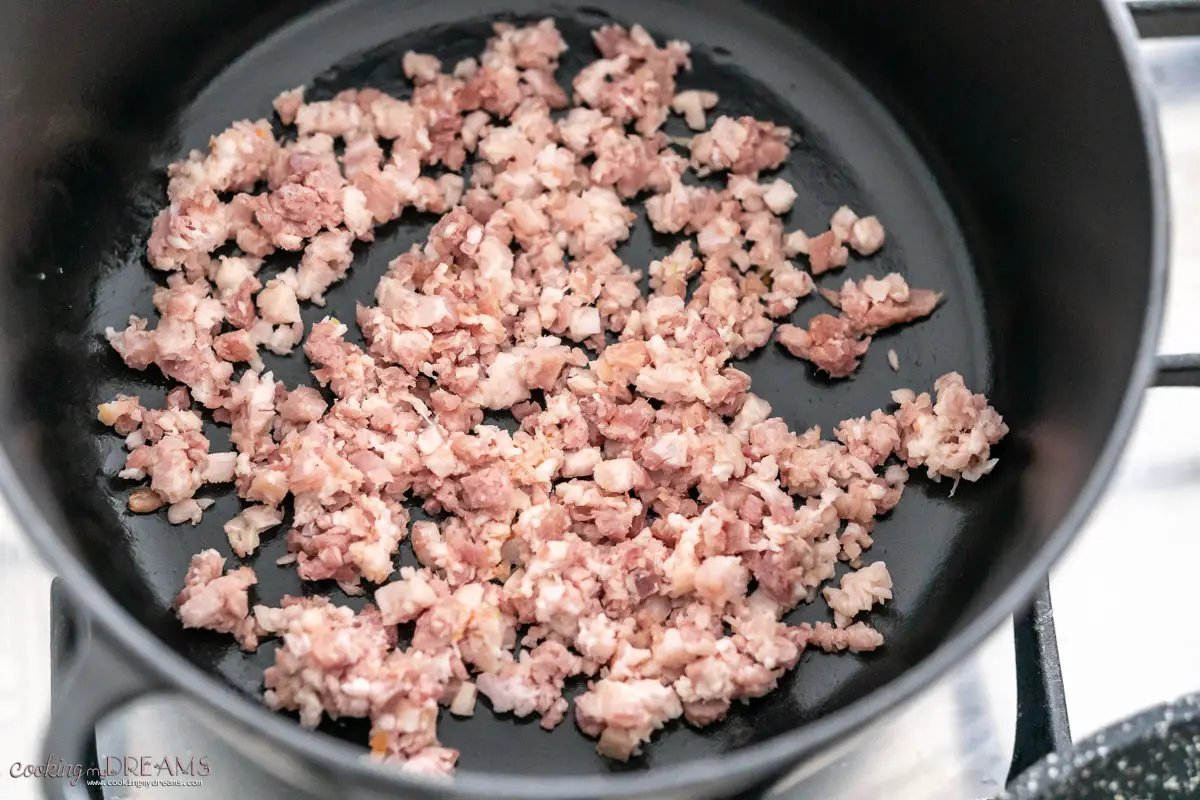
First, finely mince the pancetta and fry it in a large pot drizzled with olive oil until it starts to brown.
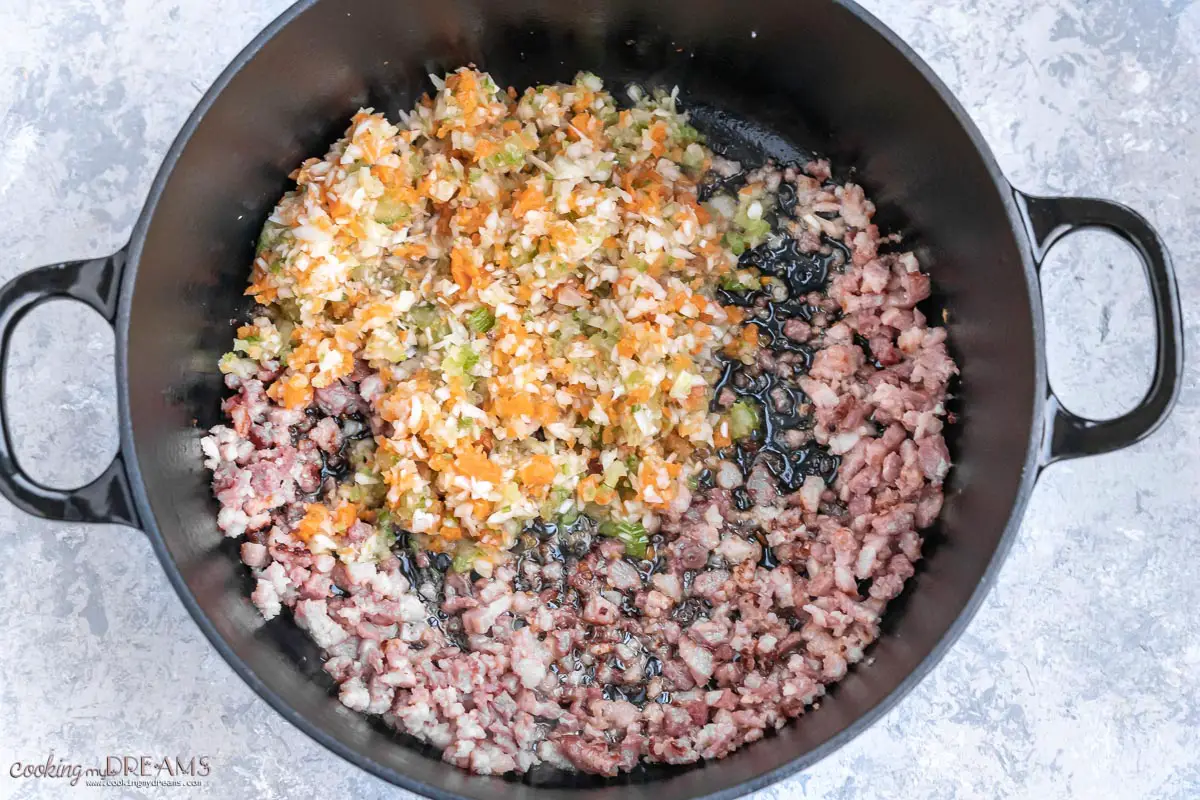
Then add the finely minced soffritto of onions, carrots, and celery. Check this post to make Soffritto and freeze it in portions. Cook the soffritto for a few minutes until soft.
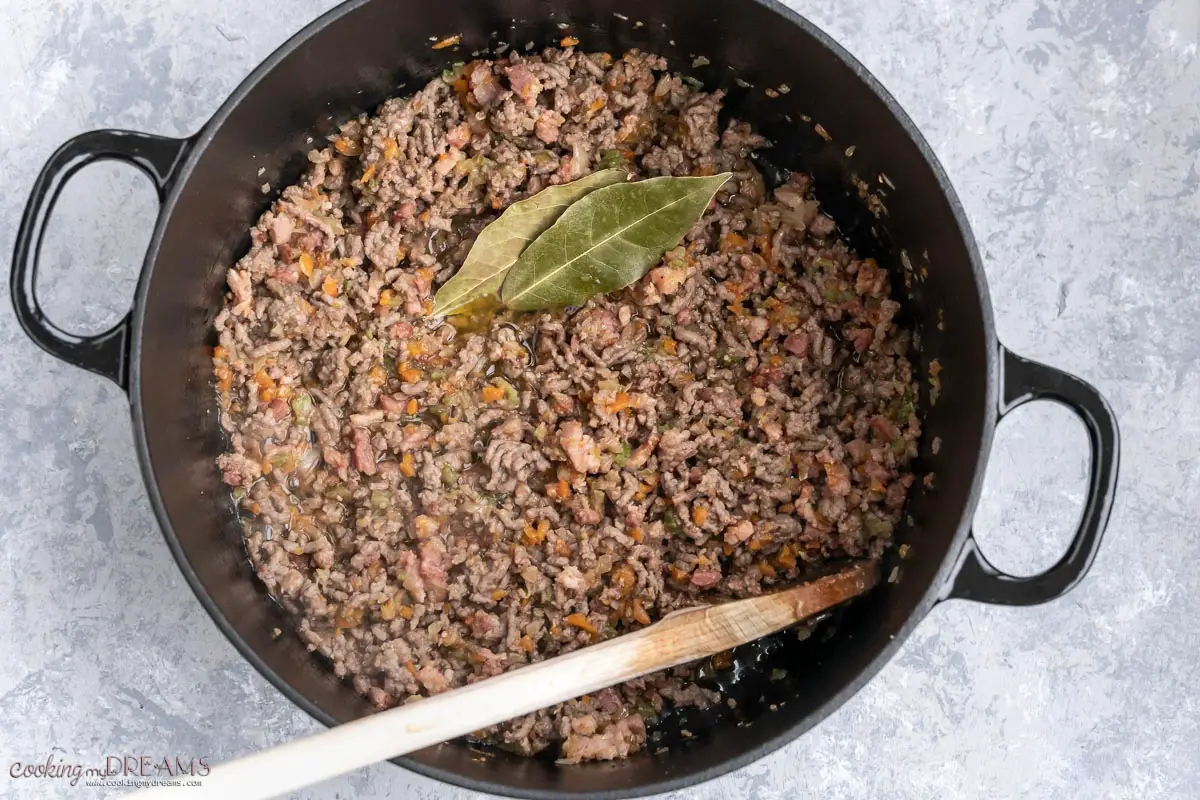
Add the minced meat and cook 5-10 minutes until it starts to brown. Season with salt and pepper, then add the white wine. Add the herbs and whole bay leaves as well.
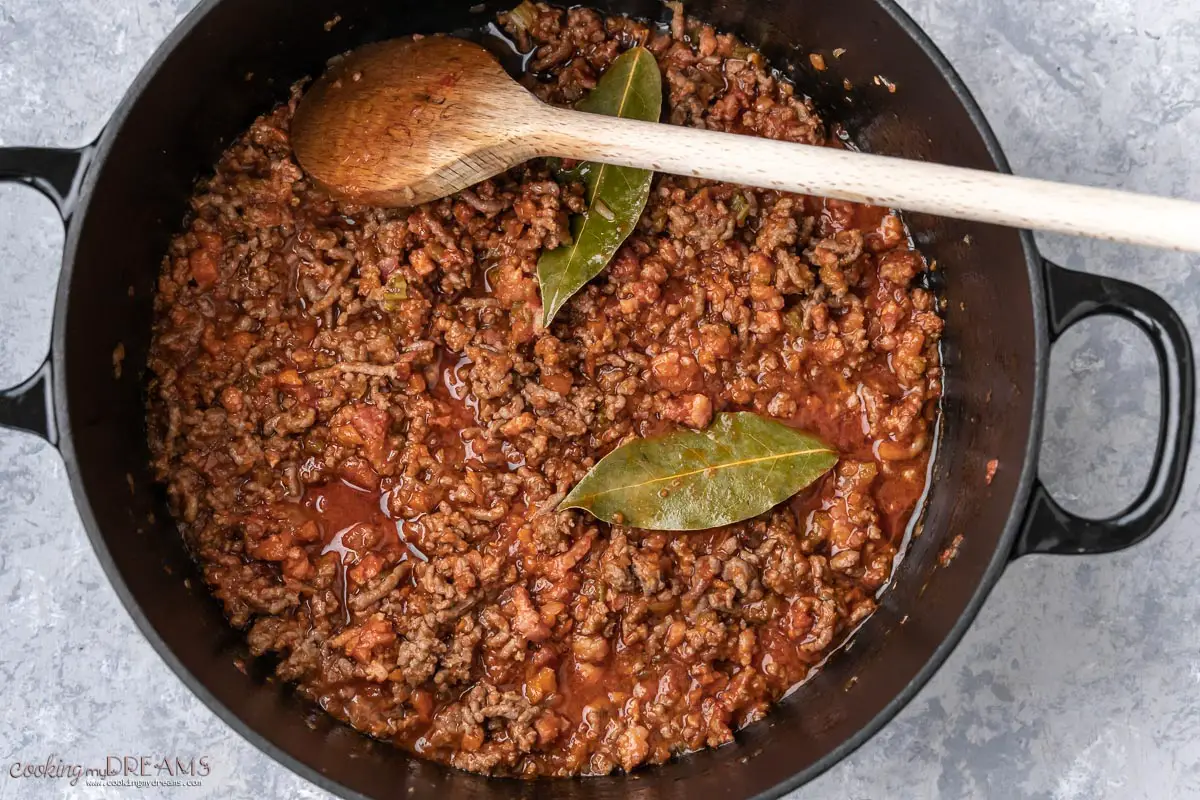
After a few minutes, add the tomato paste, mix well and turn down the heat. Add a bit of water or broth if necessary. Then let it simmer for a couple of hours, mixing once in a while and adding water if it gets too dry.

After 2 hours, add the milk and turn off the heat. Mix well and season again to taste.
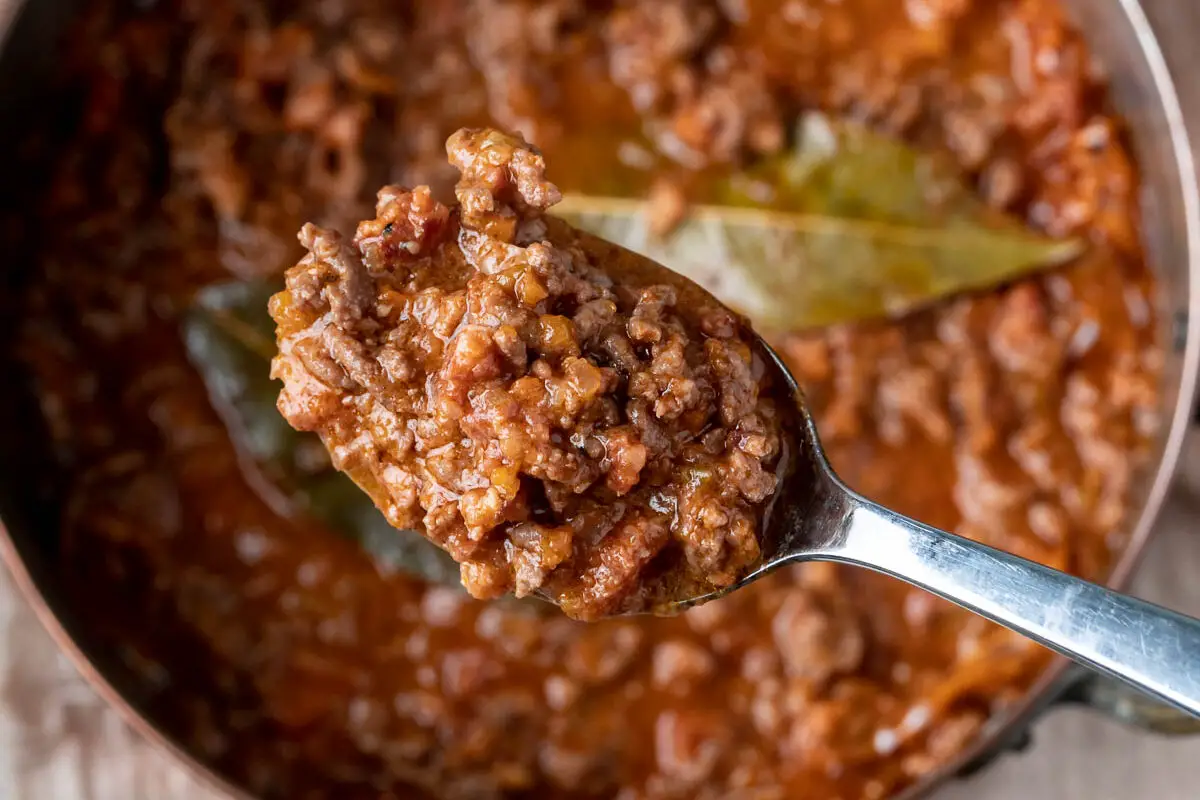
Serve immediately or let it cool down to store in portions.
Which Pasta goes with Beef Ragù?
The traditional way to serve Beef Ragù is with Tagliatelle, better if handmade. But Bolognese Ragù is often served also with other types of pasta, like Ravioli, Tortellini, Spaghetti, or short pasta like Penne. and of course, it's used in the traditional Lasagna.
FAQ & Tips
Milk's sole purpose is to cut the acidity from the tomatoes so that's why it's added only at the end, as it doesn't need to cook.
The golden rule is to always cook with wine you'd drink. It doesn't matter which wine you choose, as long as it's red and of good quality. I personally often like to use a Merlot.
Yes, absolutely! I always make a big batch of Bolognese or Tuscan Ragù and then portion the leftovers in freezer bags or storage containers and freeze for up to 3 months. I then thaw them in the fridge overnight, or in the microwave with the defrost function, or even directly in the pot at low heat with half-inch of water.
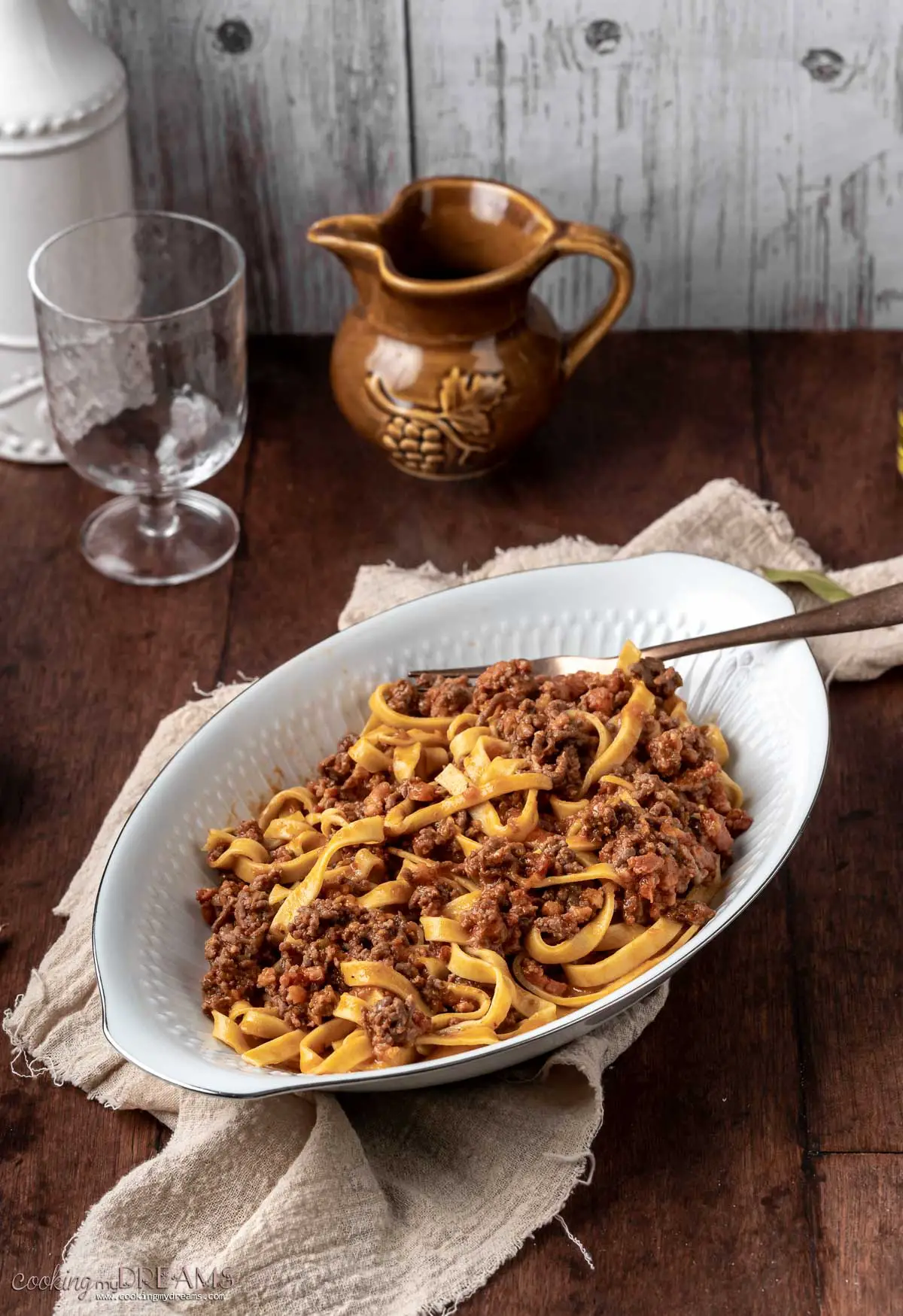
Related Recipes you might like
📖 RECIPE
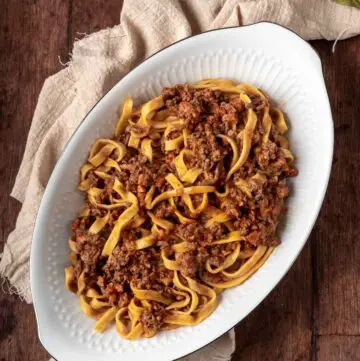
Tagliatelle with Bolognese Beef Ragù
Ingredients
- 10.5 oz Minced Beef
- 1 cup Pancetta
- ¼ cup Carrot
- ¼ cup Celery
- ¼ cup Onion
- ¼ cup Tomato Paste
- ½ cup White Wine
- ½ cup Whole Milk
- Olive Oil
- Salt
- Black Pepper
- Italian Herbs, see notes
- 2 Bay Leaves
- Tagliatelle pasta, about 3 oz per person
Instructions
- Finely mince the pancetta and fry it in a large pot drizzled with olive oil until it starts to brown.
- Add the finely minced soffritto of onions, carrots, and celery. See notes on tips for Soffritto.
- Cook the soffritto for a few minutes to soften, then add the minced meat and cook 5-10 minutes until it starts to sizzle. Season with salt and pepper, then add the white wine.
- Tie together a couple of sprigs of sage, thyme, and rosemary, and add it to the sauce. Or, instead, add a teaspoon of minced dried herbs. Add the whole bay leaves as well.
- After a few minutes, add the tomato paste, mix well, and turn down the heat. Add a bit of water or broth if necessary.
- Let it simmer for a couple of hours, mixing once in a while and adding more water if it gets too dry.
- Bring a large pot of salted water to boil.
- After 2 hours, add the milk and turn off the heat. Mix well and season again to taste.
- Toss the Tagliatelle in the boiling water and cook for 3-4 minutes or follow the packaging directions. Drain and serve with the ragù.
Notes
Nutrition
Nutritional information is only an estimate. The accuracy of the nutritional information for any recipe on this site is not guaranteed.



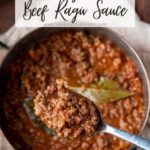
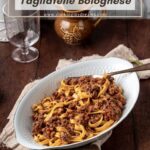
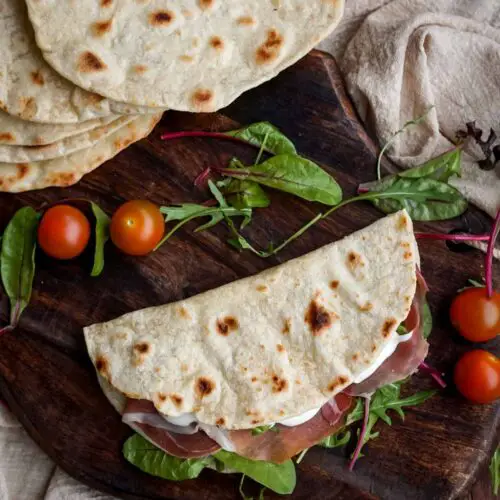
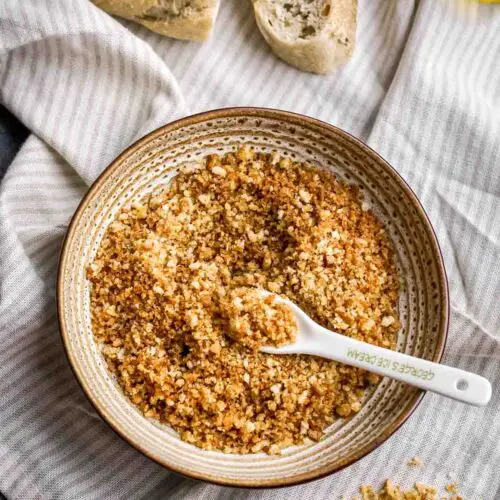
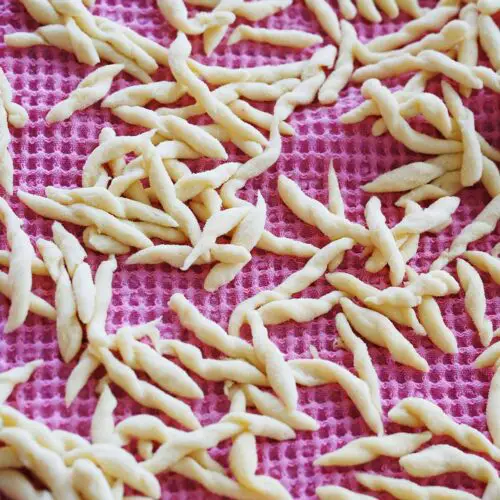
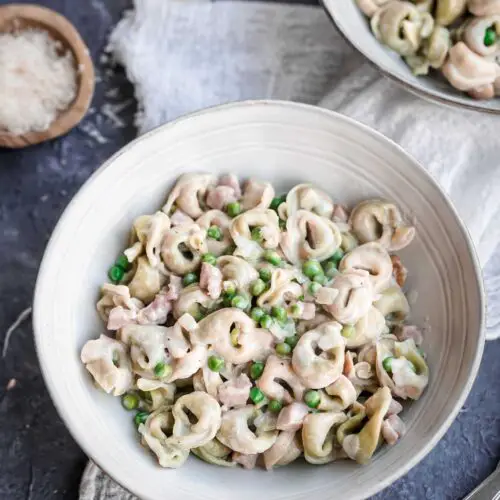
Leave a Comment